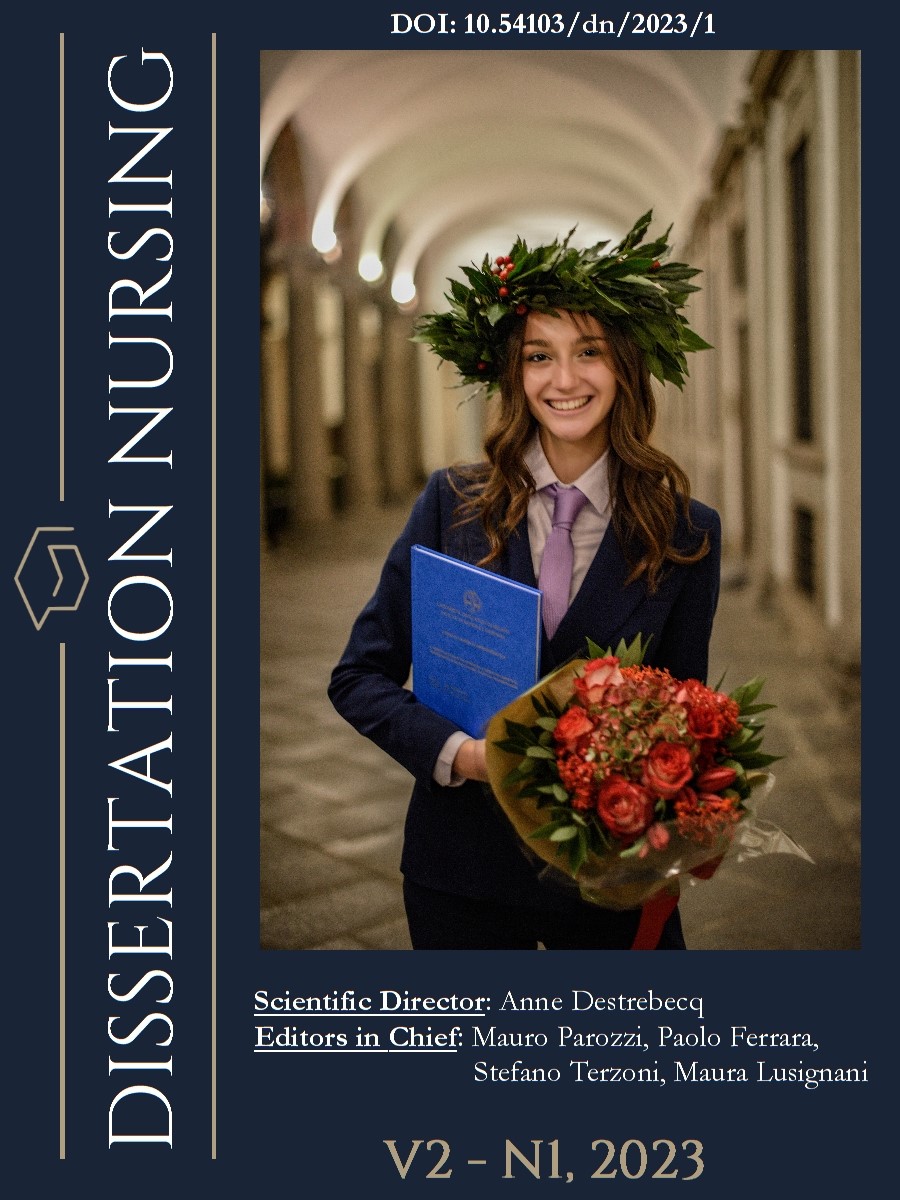Knowledge and interest of bachelor nursing students about augmentative and alternative communication (A.A.C.): a pre-post study
DOI:
https://doi.org/10.54103/dn/18976Keywords:
Alternative Augmentative Communication, Students, Nurses, Knowledge, PerceptionsAbstract
INTRODUCTION:
Nursing staff, whether already a professional or in training, is increasingly coming into contact with caregivers who present communication deficits, whether temporary or permanent. People with Complex Communicative Needs (CCB) often require compensatory strategies, such as Alternative Augmentative Communication (AAC). Knowledge of AAC and the systems it makes available already in the training phase is an essential resource for establishing and maintaining an effective therapeutic relationship.
AIM:
To investigate knowledge and perceptions regarding Augmentative and Alternative Communication in a sample of bachelor nursing students by assessing the effectiveness of a training intervention.
METHODS:
Pre-post monocentric study with enrolment of a sample of second and third year students of one bachelor school of nursing of the University of Milan; construction and preliminary validation of a questionnaire to detect knowledge and perceptions before and after participation in a training intervention.
RESULTS:
140 students participated; at T0, 40.0% of the sample was familiar with the CAA; at T1, 92.14%. After the training intervention, the sample's knowledge increased statistically (p < 0.001 for all proposed questions). The questionnaire created showed good validity (CVI-S = 0.93).
CONCLUSIONS:
It seems desirable to investigate how CAA is also used in different clinical care contexts, to quantify the professionals trained in its use, and to investigate the knowledge of students of other health professions and not.
References
Scientifico C, Damiani M, Corradi F, Castellano G, Luciani N, Gasperini M, et al. ISAAC Italy PRINCIPI E PRATICHE in CAA Prima stesura : aprile 2017. 2017;109–64.
Sartori I. Disabilità cognitivo-linguistica e comunicazione aumentativa alternativa. Milano: Franco Angeli; 2010.
Cafiero JM. Comunicazione aumentativa ed alternativa, strumenti e strategie per l’autismo e i deficit di comunicazione. Trento: Erickson; 2005.
Viccione C. La comunicazione Aumentativa ed il ritardo mentale, Strategie educative e didattiche. Parma: The Boopen Editore; 2013.
ISAAC - Online [Internet]. 2019 [cited 2020 Jan 28]. Available from: https://www.isaac-online.org/english/what-is-aac/
Warrick A. Comunicare senza parlare, Comunicazione Aumentativa e Alternativa nel Mondo, versione italiana a cura di Bombardi P.; Favero E.; Sabbadini M.; Schindler A. Torino: Omega Edizioni; 2003.
David R B, Pat M. Manuale di comunicazione aumentativa e alternativa. Interventi per bambini e adulti con complessi bisogni comunicativi (quarta edizione)(edizione italiana a cura di Rivarola A.; Veruggio G.; Maggioni G.). Trento: Erickson; 2014.
Gropp M, Johnson E, Bornman J, Koul R. Nurses’ perspectives about communication with patients in an intensive care setting using a communication board: A pilot study. Heal SA Gesondheid. 2019;24:1–9.
Antonella Costantino M. Costruire libri e storie con la CAA, gli IN-book per l’intervento precoce e l’inclusione. Trento: Erickson; 2011.
Barbosa RT de A, de Oliveira ASB, de Lima Antão JYF, Crocetta TB, Guarnieri R, Antunes TPC, et al. Augmentative and alternative communication in children with Down’s syndrome: A systematic review. BMC Pediatr. 2018;18(1):1–16.
Biggs EE, Carter EW. Interazione tra pari e uso CAA. 2017;122:25–48.
Pitt KM, Brumberg JS. Guidelines for feature matching assessment of brain–computer interfaces for augmentative and alternative communication. Am J Speech-Language Pathol. 2018;27(3):950–64.
Light J, McNaughton D. Designing AAC research and intervention to improve outcomes for individuals with complex communication needs. AAC Augment Altern Commun. 2015;31(2):85–96.
Fontani S. Comunicazione Aumentativa Alternativa e Disabilità. Proposte differenziate per interventi educativi, scolastici e abilitativi inclusivi. Parma: edizioni junior; 2016.
Consiglio Nazionale degli Ordini delle professioni infermieristiche. Codice deontologico delle professioni infermieristiche. Approvato dal Consiglio Nazionale degli Ordini delle professioni infermieristiche riunito a Roma nella seduta del 12 e 13 aprile 2019.
Salem A, Ahmad MM. Communication with invasive mechanically ventilated patients and the use of alternative devices: integrative review. J Res Nurs [Internet]. 2018;23(7):614–30. Available from: https://doi.org/10.1177/1744987118785987
Handberg C, Voss AK. Implementing augmentative and alternative communication in critical care settings: Perspectives of healthcare professionals. J Clin Nurs. 2018;27(1–2):102–14.
Dithole KS, Thupayagale-Tshweneagae G, Akpor OA, Moleki MM. Communication skills intervention: Promoting effective communication between nurses and mechanically ventilated patients. BMC Nurs. 2017;16(1):1–6.
Downloads
Published
How to Cite
Issue
Section
License
Copyright (c) 2023 Davide Bugada, Paolo Ferrara, Laura Di Prisco, Stefano Terzoni, Roberta Lodini, Giancarlo Celeri Bellotti, Elena Sala, Mauro Parozzi, Lara Carelli

This work is licensed under a Creative Commons Attribution-NonCommercial-NoDerivatives 4.0 International License.
Accepted 2022-11-23
Published 2023-01-30











